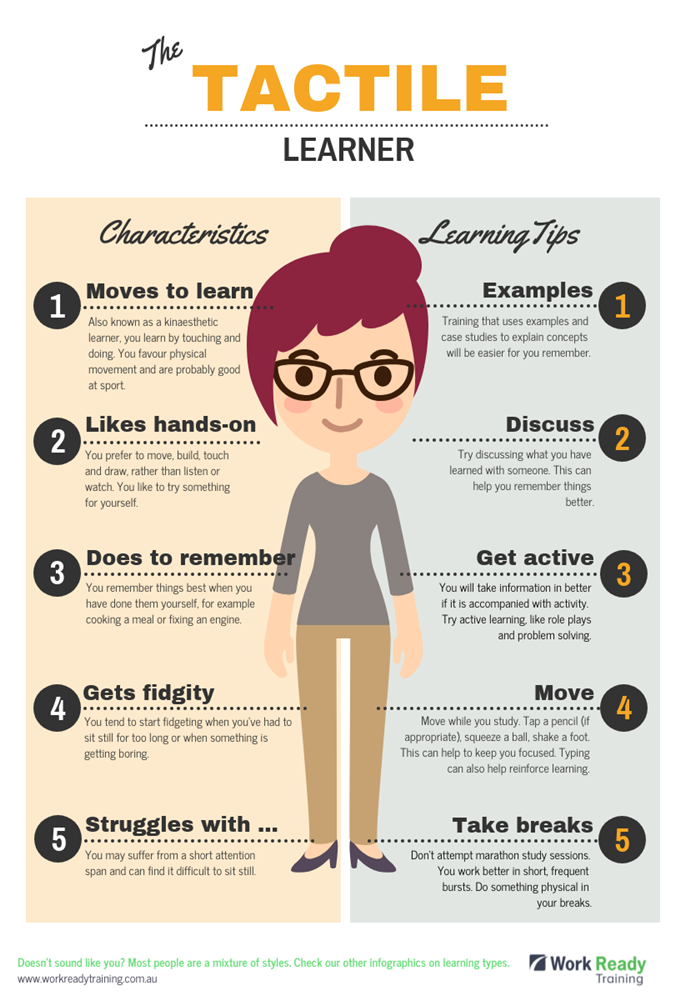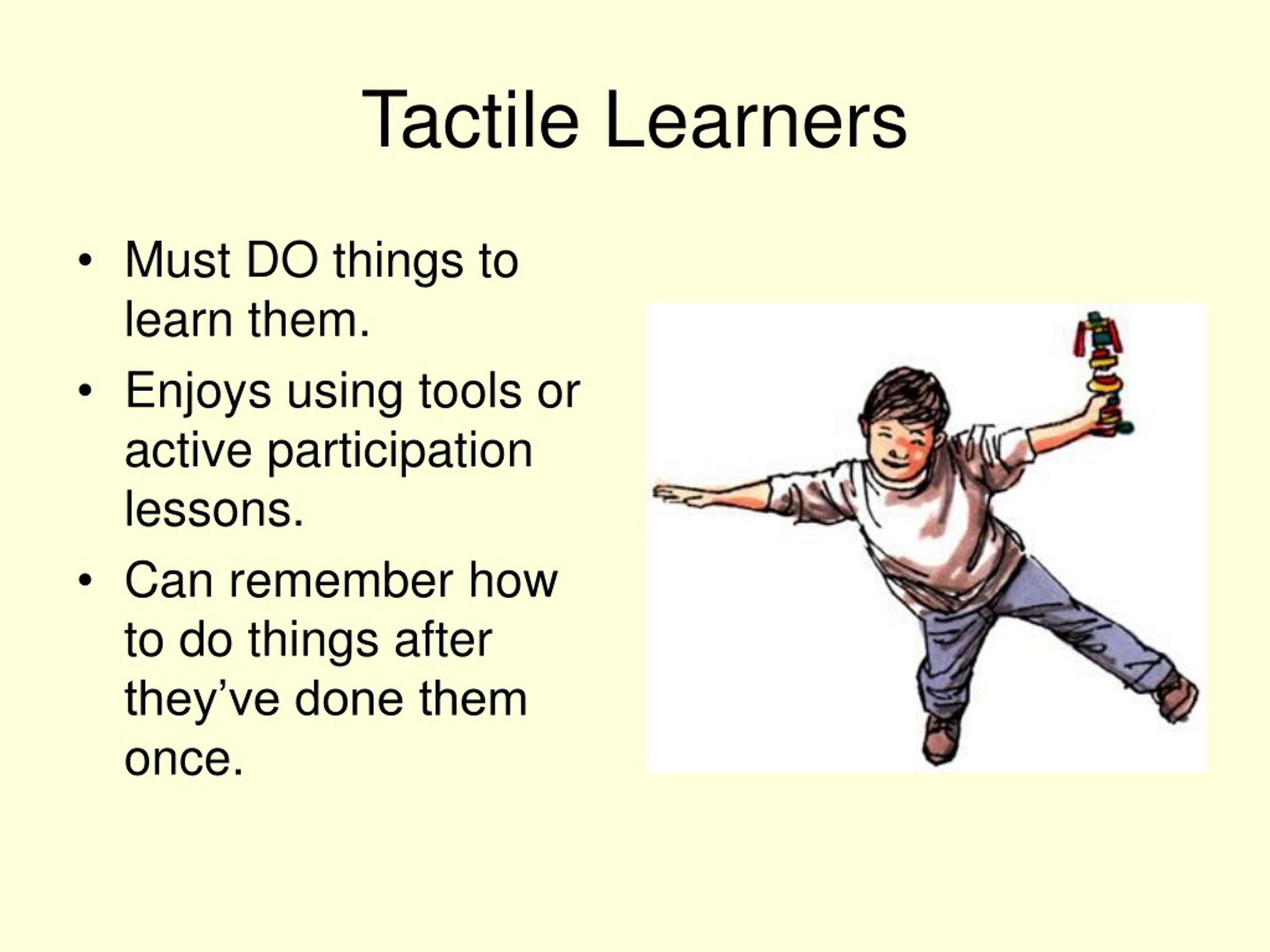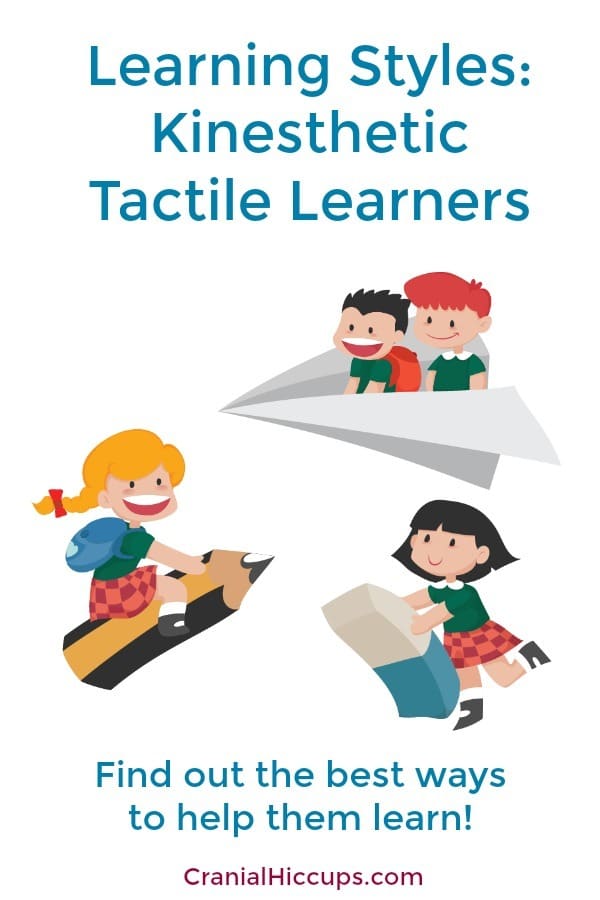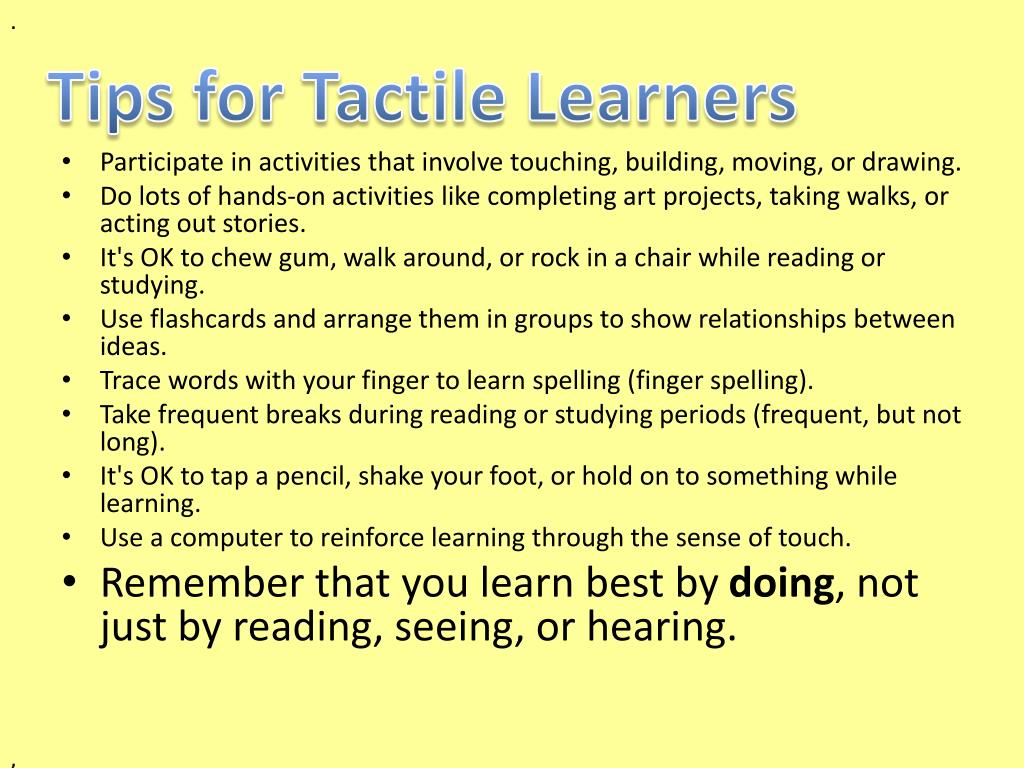
Montessori and Learning Styles A multisensory approach for all learners Inly Insights
Tactile learners learn through fine motor movements rather than whole body movement. They are more moderate than kinesthetic learners who require whole body movement.

LEARNING STYLES TACTILE
Kinesthetic learning (American English), kinaesthetic learning (British English), or tactile learning is learning that involves physical activity. As cited by Favre (2009), Dunn and Dunn define kinesthetic learners as students who prefer whole-body movement to process new and difficult information. [1]

Tactile Learning Style Engaging HandsOn Education for Enhanced Comprehension Must11
The Tactile Learning Definition means learning through touching or feeling. If your child has a Tactile Learning Style, he learns best using hands-on activities, touching, textures, fine motor movement, and activities like those listed on our "21 Teaching Activities for Tactile Learners" page.

Tactile Learning Activities Build a Better Book University of Colorado Boulder
Tactile learning involves touching, holding, poking, and squeezing learning materials. It gives students an opportunity to directly manipulate objects in a lesson which gives them a more dynamic, more enriched understanding. Some students prefer to learn through touch. They have a tactile learning style.
:max_bytes(150000):strip_icc()/Science-Echo-Cultura-Getty-Images-137548114-58958abe3df78caebc8ce47d.jpg)
Learning Ideas for Students with a Tactile, Kinesthetic Learning Style
3 Distinct Types Of Tactile Learning Virtually everyone learns through the sense of touch, but there is a vast continuum with some learners reporting the tactile modality to be somewhat distracting while others find that it serves a vital role.

Strategies for Reaching ALL Learners Tejeda's Tots Blog Kinesthetic learning, Kinesthetic
Tactile or kinesthetic learners are those who learn through experiencing and doing things. How Tactile Learners Learn Tactile learners like to experience the world and act out events. To remember a phone number, tactile learners may remember the pattern of their fingers as they press the numbers on a phone or keypad.

PPT Learning Styles PowerPoint Presentation, free download ID2584140
1. Get Moving! One of the best ways to learn as a tactile learner is to get up and move around. You can do this by standing up during lessons or lectures, taking breaks to walk around, and even doing some light exercise. Moving your body will help you stay focused and engaged in the material.
/GettyImages-5tactile37251933-57ad1f755f9b58b5c26263c5.jpg)
Make the Most of Your Tactile Learning Style
This style is often called multi-sensory learning because tactile learners hear or see to learn, and then complete their learning by trying it out themselves. This is very different from auditory and visual learning where learners need to see or hear instruction in order to learn it.

Work Ready Training. What’s your learning style Tactile learner?
Tactile learning style can also benefit older children and adults, as it can help them retain information and improve their problem-solving ability. Characteristics of a Tactile Learner Tactile learners often have specific characteristics that set them apart from other learners. Some common characteristics of tactile learners include the following.

Virtually everyone learns through the sense of touch, but there is a vast continuum with some
The Learning Styles Auditory Visual Tactile If you are an auditory learner, you learn by hearing and listening. You understand and remember things you have heard. You store information by the way it sounds, and you have an easier time understanding spoken instructions than written ones.

WHAT IS TACTILE LEARNING? How Tactile Activities Improve Problem Solving & Language Processing
Tactile Learning in Literacy Education - Barry Online Published On: May 29, 2020 Updated On: August 18, 2021 Any parent or teacher can tell you that not all children learn in the same way. The popular VARK modalities hold that there are four styles of learning: Visual, Aural, Read/Write, and Kinesthetic.

How to Teach a Kinesthetic Learner Paradise Praises
This style is also called tactile learning or experiential learning. Kinesthetic comes from kinesthesis or kinesthesia, which is the experience of receiving information from the sense organs: touch, taste, smell, see, and hear.

PPT Learning Styles PowerPoint Presentation, free download ID275379
Tactile learning - also known as kinesthetic learning - requires physically interacting with the world around you. This style of teaching may not work for everyone, but for tactile learners, the sensation of touch is a crucial part of the learning process. Here at Promethean, we create educational, interactive tools that inspire and excite.

Learning Styles Kinesthetic, Tactile Learners Cranial Hiccups
Kinesthetic or tactile learning is a way of learning with the help of tactile senses: touching, feeling, and manipulating objects. Unlike visual and auditory learners, tactile learners require more tactile input to understand and remember concepts. Tactile learners are more associated with physical activities than reading or writing learners.

PPT Learning Styles PowerPoint Presentation, free download ID2584140
Tactile learning, sometimes called kinesthetic learning, is considered one of the four main methodologies in the theory of learning styles. The others are auditory, visual, and reading and writing. So-called tactile learners are considered those who learn best by physical touch or by trying to do something themselves.

Learning Style and Sensory Processing Your Therapy Source
Text Learning styles are a popular concept in psychology and education and are intended to identify how people learn best. VARK learning styles suggest that there are four main types of learners: visual, auditory, reading/writing, and kinesthetic.